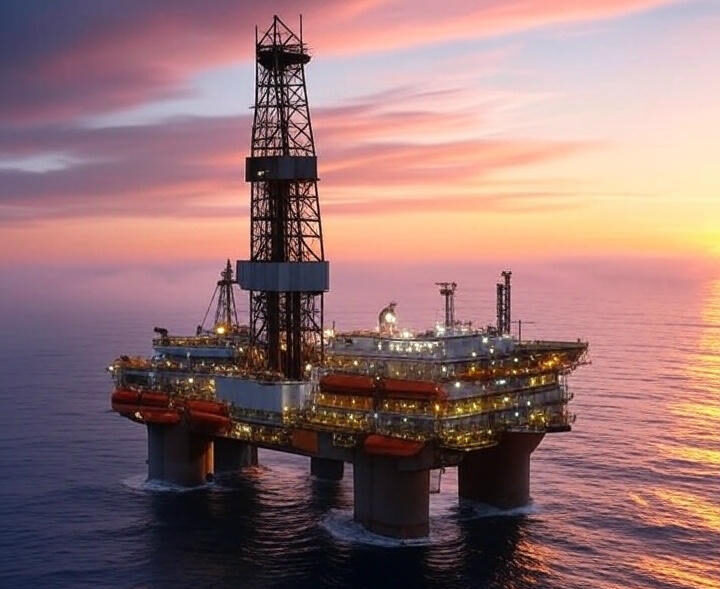The oil and gas industry has always pushed technological boundaries to access energy reserves in the most challenging environments. One such frontier is deep offshore technology, which enables exploration and production in ultra-deepwater regions. With increasing energy demands and depleting onshore reserves, deep offshore drilling has become a critical component of global energy supply.
In this article, we’ll explore the latest advancements in deepwater drilling technology, its challenges, key players, and future trends shaping the industry.
What Is Deep Offshore Technology?
Deep offshore technology refers to the specialized equipment, techniques, and engineering solutions used to extract oil and gas from deepwater and ultra-deepwater reserves—typically at depths exceeding 500 meters (1,640 feet) and sometimes reaching 3,000 meters (9,842 feet) or more.
This technology includes:
-
Subsea production systems
-
Floating production platforms (FPSOs, semi-submersibles, SPAR platforms)
-
Advanced drilling rigs (drillships, dynamically positioned rigs)
-
Remote-operated vehicles (ROVs) for underwater maintenance
-
High-pressure, high-temperature (HPHT) well technologies
With conventional reserves dwindling, deep offshore fields now contribute significantly to global oil production, making this technology indispensable.
Key Advancements in Deep Offshore Drilling
1. Floating Production Systems
Floating Production Storage and Offloading (FPSO) vessels are crucial for deepwater operations. These ships process and store oil before transferring it to tankers, eliminating the need for permanent pipelines in remote locations.
2. Subsea Processing & Boosting
Modern subsea systems now include separation, compression, and pumping technologies that enhance recovery rates and reduce the need for surface infrastructure.
3. Dynamic Positioning Systems
Drillships and semi-submersibles use thruster-assisted dynamic positioning (DP) to maintain stability in harsh offshore conditions without anchoring.
4. Enhanced Oil Recovery (EOR) in Deepwater
Techniques like water injection, gas lift, and chemical EOR are being adapted for deepwater fields to maximize extraction efficiency.
5. Digitalization & AI in Offshore Operations
Artificial intelligence (AI) and IoT sensors optimize drilling performance, predict equipment failures, and improve safety in deep offshore environments.
Challenges in Deep Offshore Exploration
Despite technological progress, deepwater drilling faces several hurdles:
-
Extreme Pressure & Temperature Conditions – HPHT reservoirs require specialized equipment.
-
High Operational Costs – Deepwater projects demand massive investments (billions of dollars).
-
Environmental Risks – Oil spills in deepwater (like Deepwater Horizon) pose severe ecological threats.
-
Logistical Complexities – Remote locations and harsh weather conditions complicate operations.
Companies must balance innovation with risk management to ensure sustainable deep offshore production.
Major Deep Offshore Oil Fields & Key Players
Some of the world’s largest deepwater projects include:
-
Tupi Field (Brazil) – Operated by Petrobras in the Santos Basin.
-
Jubilee Field (Ghana) – Developed by Tullow Oil and partners.
-
Perdido Field (Gulf of Mexico) – Operated by Shell in ultra-deepwater.
Leading companies in deep offshore technology:
-
Schlumberger
-
Halliburton
-
Baker Hughes
-
TechnipFMC
-
Saipem
These firms drive innovation in subsea engineering, drilling automation, and offshore safety.
The Future of Deep Offshore Technology
The industry is evolving with:
✔ Automated drilling rigs for precision and efficiency.
✔ Carbon capture and storage (CCS) to reduce emissions.
✔ Hybrid energy systems (wind + oil rigs) for sustainability.
✔ Expansion into new frontiers (Arctic deepwater, pre-salt basins).
As renewable energy grows, deep offshore technology will adapt, ensuring oil and gas remain part of the energy mix while minimizing environmental impact.
Conclusion
Deep offshore technology is a game-changer for the oil and gas sector, unlocking previously inaccessible reserves. With continuous advancements in subsea systems, AI-driven drilling, and floating production, the industry is overcoming challenges to meet global energy demands.
As technology progresses, deepwater exploration will remain a vital yet evolving field, balancing innovation, cost-efficiency, and environmental responsibility.
Deep Offshore Technology: Revolutionizing Oil and Gas Exploration
The oil and gas industry has always pushed technological boundaries to access energy reserves in the most challenging environments. One such frontier is deep offshore technology, which enables exploration and production in ultra-deepwater regions. With increasing energy demands and depleting onshore reserves, deep offshore drilling has become a critical component of global energy supply.
In this article, we’ll explore the latest advancements in deepwater drilling technology, its challenges, key players, and future trends shaping the industry.
What Is Deep Offshore Technology?
Deep offshore technology refers to the specialized equipment, techniques, and engineering solutions used to extract oil and gas from deepwater and ultra-deepwater reserves—typically at depths exceeding 500 meters (1,640 feet) and sometimes reaching 3,000 meters (9,842 feet) or more.
This technology includes:
-
Subsea production systems
-
Floating production platforms (FPSOs, semi-submersibles, SPAR platforms)
-
Advanced drilling rigs (drillships, dynamically positioned rigs)
-
Remote-operated vehicles (ROVs) for underwater maintenance
-
High-pressure, high-temperature (HPHT) well technologies
With conventional reserves dwindling, deep offshore fields now contribute significantly to global oil production, making this technology indispensable.
Key Advancements in Deep Offshore Drilling
1. Floating Production Systems
Floating Production Storage and Offloading (FPSO) vessels are crucial for deepwater operations. These ships process and store oil before transferring it to tankers, eliminating the need for permanent pipelines in remote locations.
2. Subsea Processing & Boosting
Modern subsea systems now include separation, compression, and pumping technologies that enhance recovery rates and reduce the need for surface infrastructure.
3. Dynamic Positioning Systems
Drillships and semi-submersibles use thruster-assisted dynamic positioning (DP) to maintain stability in harsh offshore conditions without anchoring.
4. Enhanced Oil Recovery (EOR) in Deepwater
Techniques like water injection, gas lift, and chemical EOR are being adapted for deepwater fields to maximize extraction efficiency.
5. Digitalization & AI in Offshore Operations
Artificial intelligence (AI) and IoT sensors optimize drilling performance, predict equipment failures, and improve safety in deep offshore environments.
Challenges in Deep Offshore Exploration
Despite technological progress, deepwater drilling faces several hurdles:
-
Extreme Pressure & Temperature Conditions – HPHT reservoirs require specialized equipment.
-
High Operational Costs – Deepwater projects demand massive investments (billions of dollars).
-
Environmental Risks – Oil spills in deepwater (like Deepwater Horizon) pose severe ecological threats.
-
Logistical Complexities – Remote locations and harsh weather conditions complicate operations.
Companies must balance innovation with risk management to ensure sustainable deep offshore production.
Major Deep Offshore Oil Fields & Key Players
Some of the world’s largest deepwater projects include:
-
Tupi Field (Brazil) – Operated by Petrobras in the Santos Basin.
-
Jubilee Field (Ghana) – Developed by Tullow Oil and partners.
-
Perdido Field (Gulf of Mexico) – Operated by Shell in ultra-deepwater.
Leading companies in deep offshore technology:
-
Schlumberger
-
Halliburton
-
Baker Hughes
-
TechnipFMC
-
Saipem
These firms drive innovation in subsea engineering, drilling automation, and offshore safety.
The Future of Deep Offshore Technology
The industry is evolving with:
✔ Automated drilling rigs for precision and efficiency.
✔ Carbon capture and storage (CCS) to reduce emissions.
✔ Hybrid energy systems (wind + oil rigs) for sustainability.
✔ Expansion into new frontiers (Arctic deepwater, pre-salt basins).
As renewable energy grows, deep offshore technology will adapt, ensuring oil and gas remain part of the energy mix while minimizing environmental impact.
Conclusion
Deep offshore technology is a game-changer for the oil and gas sector, unlocking previously inaccessible reserves. With continuous advancements in subsea systems, AI-driven drilling, and floating production, the industry is overcoming challenges to meet global energy demands.
As technology progresses, deepwater exploration will remain a vital yet evolving field, balancing innovation, cost-efficiency, and environmental responsibility.
Visit Our Website: VinesNest





